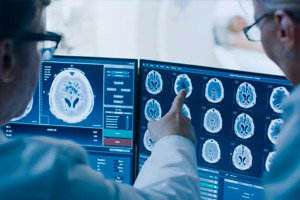
All iLive content is medically reviewed or fact checked to ensure as much factual accuracy as possible.
We have strict sourcing guidelines and only link to reputable media sites, academic research institutions and, whenever possible, medically peer reviewed studies. Note that the numbers in parentheses ([1], [2], etc.) are clickable links to these studies.
If you feel that any of our content is inaccurate, out-of-date, or otherwise questionable, please select it and press Ctrl + Enter.
Key receptor found that helps brain fight Alzheimer's disease
Last reviewed: 03.08.2025

Researchers at the University of California, San Francisco (UCSF) have identified a molecular receptor that helps the brain's immune cells, called microglia, effectively break down toxic proteins associated with Alzheimer's disease. The results of this study are published in the journal Neuron.
One of the hallmarks of Alzheimer's disease is the buildup of amyloid beta, a protein that forms clumped deposits known as plaques. These plaques damage neurons and impair brain function. However, some people develop mild or no symptoms of dementia. The cause, it turns out, may be microglial activity.
Scientists have discovered that the ADGRG1 receptor allows microglia to actively engulf and process amyloid plaques. In the absence of this receptor, according to experiments on a mouse model of Alzheimer's disease, microglia barely interacted with amyloid. As a result, rapid plaque formation, neurodegeneration, and deterioration of cognitive functions were observed.
"We think this receptor helps microglia do their job of protecting the brain throughout life," said Xianhua Piao, MD, PhD, the study's author and a UCSF pediatric specialist.
Confirmation was also obtained by re-analyzing gene expression data in the human brain. In those who died with a mild form of Alzheimer's, the level of the ADGRG1 receptor in the microglia was high, and the symptoms were mild. In those who suffered from a severe form, this receptor was almost not detected - and the amount of amyloid plaques in the brain was significantly higher.
ADGRG1 is a member of the G protein-coupled receptor family, a protein family that is a common drug target. This discovery could lead to new therapies that could activate microglia and slow the progression of Alzheimer's disease.
“Some people are naturally equipped with ‘responsible’ microglial guards,” Piao says. “But now we know that we can design drugs so that every microglia can effectively fight amyloid.”
